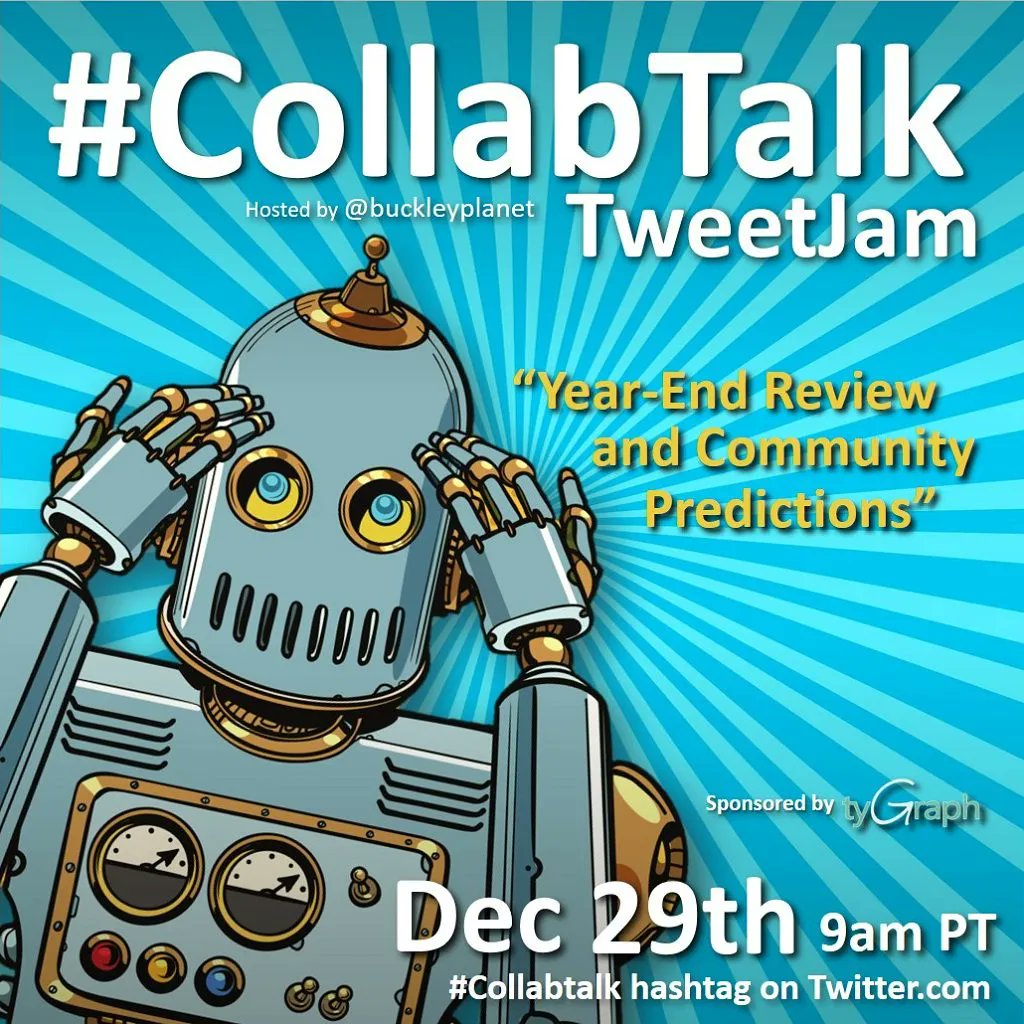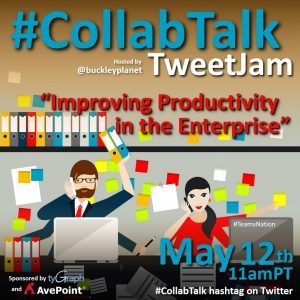December 29th brought us another TweetJam. This month’s topic brought together dozens of community champions to answer seven questions on Microsoft’s business, Microsoft’s technology, and the Microsoft Community.
What is a TweetJam
As a reminder, if you’re new to the #TweetJam concept, Tweets are short. Currently, Twitter restricts comments to 280 characters and, where URLs are present, using URL shortening to help get the most out of this limited space. If you jump into the conversation, you may see “(1/2)” in a post, which means the poster needed more than 280 characters, so check out that person’s Twitter stream to see the rest of the message.
#CollabTalk does some great stuff helping organize the hundreds of posts that come through in an hour by breaking up the topic into seven questions and requesting everyone use #collabtalk and A1 where the number matches the question. Good stuff if you’re trying to keep up.
Below are my answers to today’s seven questions, and a few of my favorites from the community (way too many to share them all!). I welcome your feedback either in the comments or on Twitter! But if you do join us on Twitter make sure you follow the rules!! Use #CollabTalk A$ where $ is the question number (e.g., “#CollabTalk A3”).
Q1: In your opinion, what was the biggest news within the Microsoft ecosystem this year?
I started off with a three-part answer on the biggest news in 2022 (click through for the full thread). Clearly, my business is focused on US National Tenants (GCC, GCC-H, DOD), and the progress made there is the biggest news to my community of partners and customers.
Additionally, Microsoft Viva has really become a main part of the conversations I’m having – commercially we’re looking at adoption and practical use, and in government we’re starting to wonder what is available when.
I will forever miss my Windows Phone. The Office apps on Android are great, but Windows Phone was a work of art. Appreciate the stroll down memory lane, Dan Usher!
Q2: Has your outlook on Microsoft technology changed this past year? Why / why not?
Microsoft’s consumer business is probably best identified with the Office desktop apps and Windows, but their enterprise applications like SharePoint have really given them a tarnished name for poorly implemented technology. I find that Microsoft’s focus on releases over the past few years including Microsoft Viva’s Employee Experience solutions as well as more pointed solutions such as Microsoft Lists, which are a user-friendly user experience built off of tried-and-true technology SharePoint Lists really tell the tale of developing SOLUTIONS, not just technology.
Joy Apple (of Joy of SharePoint fame) captures my sentiment exactly: if you look at solutions providers across the space, you hear the same thing: we need to deploy solutions, not technology. (editors note: we’re possibly on the same page because we present together on this topic so often).
Power Platform has completely exploded over the past year. The idea of citizen-development, end-users with powerful drag-and-drop tools able to create solutions without a line of custom code, further proves that we need solutions. However, what makes a tool enterprise ready? There’s an argument to be made that citizen-development only takes you so far before it is appropriate to review, refactor, and redeploy for enterprise purposes. In Wes Preston’s words, “there’s still a huge demand for pro dev”.
And as the industry pushes more towards Machine Learning and Artificial Intelligence, Kevin McDonnell points out that there’s a very real conversation that must be had around what CAN be done versus what SHOULD be done. #AIEthics
Q3: Has the launch of Microsoft Viva or the rapid expansion of the Power Platform altered how you / your customers think about collaboration?
In the world of rapid-fire feature releases, Microsoft Viva and Power Platform have the potential to change the game for organizations, especially large ones.
Phil Worrell and Treb Gatte had an excellent, albeit short, thread on business debt and making sure you’re not just “creating chaos at light speed” but taking the time to deliver plan around the technology and curate your data.
And when it comes to Power Platform, Martina Grom points out that that you must be thinking about governance. This is a question that has become a very dangerous afterthought and MOST organizations I talk to are very concerned with how to handle this.
And lastly, when considering the rapid pace at which tools are getting thrown at us, many organizations don’t have time to contextualize WHAT the new tools can do for them. How do you manage? Try a partner, says Chris Hoard!
Q4: What is the state of the Microsoft community in 2022 (local, regional, or global), and what are your community predictions for 2023?
I love these #tweetjams, and they would not be possible in a live environment. I also love the diversity and inclusion that has been enabled by virtual events across the globe, but the return to in-person (and now hybrid) events has been a game changer in my depth of enjoyment within the community.
More on the subject from Stacy Deere, Shari Oswald, Wes Preston, and “NurvAgent” who points out that as great as the virtual events are they risk overshadowing local, in person events.
And Rez Khamis reminding us about virtual meeting fatigue.
Q5: How much of a factor has AI been in 2022, and how will it further disrupt businesses in 2023, if at all?
Now, let’s talk about AI. What is AI? Is AI and Machine Learning the same thing? (no) How will AI and ML be a disruption? Great comments from Dawyne Natwick, Hal Hostetler, and John White just to name a few from the conversation.
Can we use the phase “familiarity breeds acceptance” more? That really hits home.
Q6: What are your predictions for Microsoft technologies in 2023 and beyond?
Predictions are a fun part of this. What would I do were I in charge? Or what have I experienced? There’s a lot of knowledge out there, so here’s some of my favorites.
And some of it, is real futuristic … just wait for those “back in my day” people to get into AR/VR instead of physical computer keyboards and screens!
Kevin McDonnell goes on a bit of a tare, looking at past years predictions and diving deep into everything from tech to community … this is worth clicking through and reading all of it … but I cannot say this one loud enough: INTEGRATE!!!
Q7: If you could give one piece of advice to Microsoft leadership and/or product teams, what would it be?
Lastly, unadulterated (and unrequested) advice from the community back to the mothership. I’ll go first: give us solutions, not technology.
One thing I’ve noticed in the recommendations – themes. Firstly, Joy Apple and Shari Oswald both hit the nail on the head: under-promise and over-deliver!
Nicki Borell and Phil Worrell with the reminder that sometimes new features aren’t ALWAYS what we need – sometimes we need stability and COMPLETION of a story/feature. i.e., focus on your core.
I’ll end with a comment from a new colleague of mine, John White from tyGraph, now AvePoint. And this is something I hear echoed by every single customer I have spoken to: not every new feature needs to be monetized separately. I get it, it’s a free market, it’s capitalism. But man … it’s exhausting trying to keep up with the latest SKU, the latest budget requirement, the latest cost factor we never even imagined. Woof.


